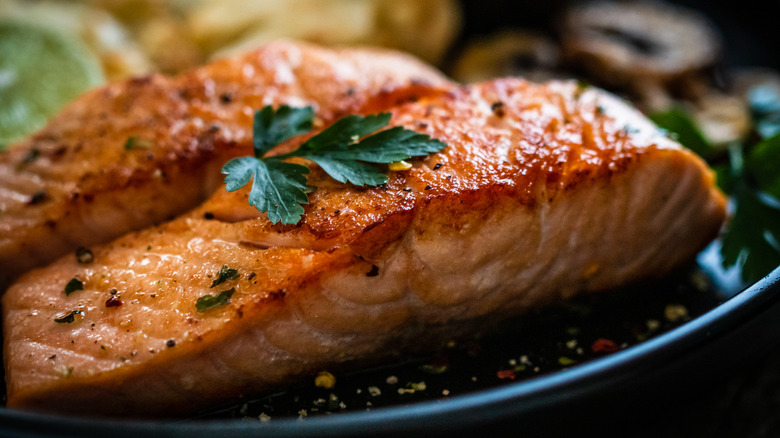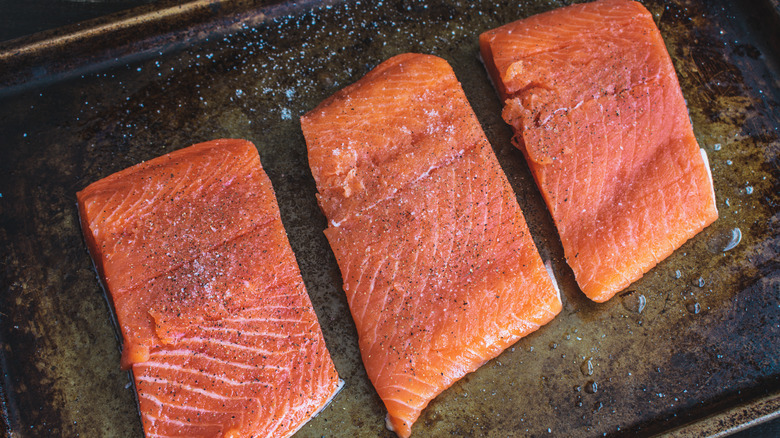Make Perfect Salmon With A Dual-Heat Technique
Even the most confident home cook has something they're reluctant to tackle, and making fish is one of those common cooking fears. Overcooked fish is kind of the worst — it's tough, dry, and bland because too much cooking means you lose all of the protein's flavorful oils. Undercooking fish isn't much better (we're not talking seared tuna steak here). When fish isn't cooked through, the center is still translucent and firm instead of opaque and flaky.
So, what's a home cook to do when a craving for salmon strikes? Start with the right temperature. Actually, make that two temperatures. A dual-heat technique will help you ensure your salmon is cooked to perfection while staying moist, tender, and flavorful, no fancy cooking skills required. Just leave the king salmon to the orcas and reach for Coho or sockeye instead.
There are two ways to use changing temperatures to achieve salmon success. The first (which Alton Brown broke down on an episode of "Good Eats") involves both your stove and your oven. Heat an oven-safe pan over medium heat, then cook your salmon filet with the flesh side down for about three minutes. Then, flip it and put the entire pan into an oven heated to 475 degrees Fahrenheit. Give it five more minutes to cook, then remove the filet from the oven and let it rest for five more minutes before serving.
Let your oven do all the work
Cooking a salmon filet in a pan is perfect for dinner for one (or two if your pan is a bit bigger). But if you are making salmon for a crowd, let your oven do all the work so everything comes out cooked evenly and piping hot.
Two tricks make this salmon cooking technique a win. The first is preheating your baking sheet in an oven set to 500 degrees Fahrenheit. Putting the salmon filet onto the hot pan will immediately start to cook the flesh and render the fat under the skin. Then, you drop the oven temperature — a lot. Like, all the way down to 275. Why? This lower temperature gently cooks the salmon to avoid any rubbery texture or dry spots. And since you're using a baking sheet, you could easily cook four to six filets this way at once.
The only downside to this method is that you've sacrificed the crispy salmon skin to the cooking gods. The skin helps insulate the salmon flesh and keep the filet intact, but won't release cleanly from the baking sheet like it would from a hot pan on your stovetop. Instead, use your fish spatula to carefully lift the filet off the skin, then worry about getting the skin off the pan when it is time to clean up.

